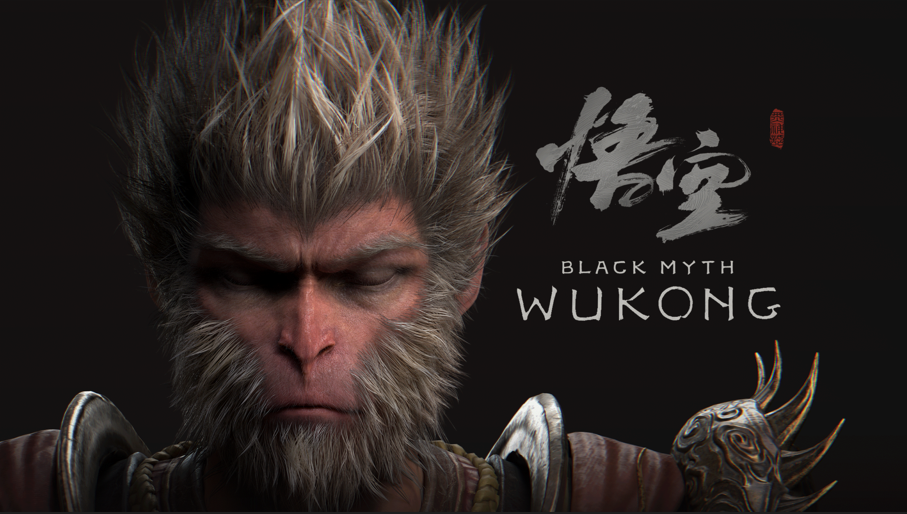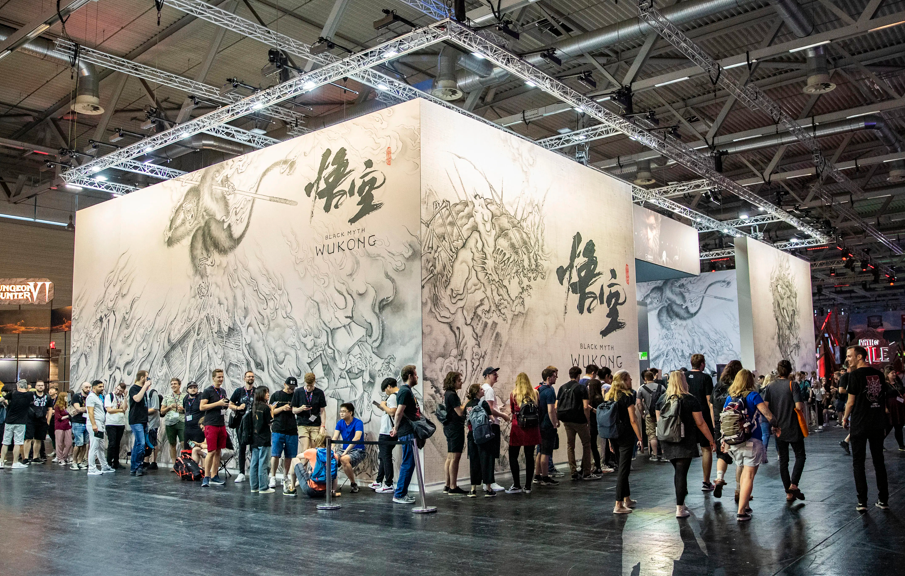
China’s first blockbuster game, “Black Myth Wukong,” is taking the gaming world by storm. While its stunning 10 million-plus sales in the opening days are mostly from China, it is piquing interest — and no small bit of envy, admiration and rage — in far corners of the global gaming community.
Praises for the detailed graphics are near universal, and the gameplay is considered sufficiently challenging to elicit grudging praise from gamers outside of China who previously didn’t think China had the right stuff to do it. “Black Myth” is touted as an action role-playing game characterized by high difficulty and emphasis on environmental storytelling in a dark fantasy setting. Because it draws heavily on classic myth and actual locations, the game is at once out of this world and very much grounded in it.
Few observers would dispute that China is a superpower in economic and military terms, but it’s generally felt the country punches below its weight in terms of cultural exports. Sure, the Chinese cinema boom has long held the respect of global film critics, but the international box office has not always been quick to follow. And, more generally, culture is perhaps China’s most enduring and beloved export, going back to ancient times, as Chinese cuisine, textiles, fine arts and architecture have long captured the world’s imagination.
At the same time it is easy for fans of global youth culture to note that Chinese exports enjoy only a fraction of the market share and consumer enthusiasm that characterizes Japan, which has swept the world with anime, manga, cute Hello Kitty memes, karate and video games. South Korea, punching above its weight for a country it’s size, has almost singlehandedly wowed the world’s youth with K-Pop groups such as Blackpink and Stray Kids. In recent years, these creative assets have served as powerful tools of soft diplomacy and exchange, shaping global perceptions and extending influence far beyond their borders.

As for China, not so much.
Now along comes “Black Myth.” The hints of a turning cultural tide can be discerned in the overwhelmingly positive early reviews. The product represents years of hard work, combining lovingly rendered scenes of traditional China with themes taken from “Journey to the West,” one of China’s most successful cultural exports of all time, albeit mostly limited to the East Asian sphere.
“Journey to the West” provides both a foundational narrative grounded in myth that locks the story into Chinese folk tradition and a range of crazy, colorful characters with impossible skill sets that eerily anticipate and fit perfectly the idiosyncratic needs of video gamers born centuries later.
A mischievous monkey who can fly? Check.
A magic cudgel? Check.
Dragons and other fantastic creatures? Check.
Unworldly characters who defy death? Check.
A likeable rogue who overcomes adversity after many ordeals? Check.
The international reaction to the game’s release on X (Twitter) has been overwhelmingly positive to date, as thousands of English-language posters who self-identify as gamers sing its praises, sometimes softly and with raised eyebrows but praise nonetheless.
What? A decent game, maybe good, maybe even great — from China?
Hardcore gamers, however aloof they may be to politics, are not unaware of the current tensions between the United States and China, yet early returns suggest that dedicated gamers are not going to let politics, or China’s iffy image in the West, come between them and some good gameplay. As “nib95” an enthusiastic poster on X writes:
“Woah, super strong intro for ‘Black Myth WuKong’! Epic God of War takes on the Titans fantasy vibes. Incredible physics-based volumetric effects in first boss, plus cool magic abilities. Graphics are superb, almost tech demo-like at times.”
According “DudeLore,” another poster on X:
“‘Black Myth Wukong’ is absolutely Incredible! I'm about an hour in, and the entire game feels like a cinematic trailer for another game. No Pre Render BS. I’m getting well into 150 fps range at all times. 1440p maxed graphics. So far, the story is starting off very well, … game of the year if this continues. Highly recommended. Everyone deserves to play this.”
There is a touching response to this post, in what may be the beginnings of a friendly grassroots diplomacy between Chinese and non-Chinese players, as “DotDotLyu” responds:
“Have fun! If u got any trouble understanding the background story, I can help with that.”
Chinese gamers can rightfully lay claim to greater familiarity with the source material, which may be overwhelming to gamers unfamiliar with “Journey to the West.” But the story, based on Sun Wukong, the monkey king, is so well known in East Asia, from Japan to Singapore to Korea to Thailand, that it will likely make a soft landing in these markets.
Posters seem uniformly knocked out by the quality graphics, although the lifelike renderings and carefully calibrated motions designed to reflect the physics of the real world take their due in terms of massive data demands on the player’s end. And there are some complaints about frame drops and stutters, the imperfect state of play on PlayStation and the frustratingly delayed Xbox release.
“RinoTheBouncer,” who self-identifies as a visual artist and content creator, wrote to his 60,000 followers on Aug 27 that “Black Myth Wukong” is a contender for GOTY— game of the year:
“Has such wonderfully designed strong female characters. Normally, I tend to avoid these charged topics, but it’s weird to me that the game was criticized for lack of diversity when it has seven major female characters who stand out with such unique designs. It’s a Chinese game based on a classic literary work with great diversity, gameplay and presentation.”
Lifestyle guru “Nib95” adds:
“More I play ‘Black Myth WuKong,’ the more it’s a top GOTY contender. Saw this insanely ornate and detailed design in a shrine, only to later be miniaturized INTO IT for a boss + trapped in a magic bag! Attention to art detail and creativity is incredible!”
When another poster points out that the settings are based on real locations, he adds: “Oh wow. I did not know this. Now I have to see this in real life. Thank you for the link! top tier! hella cool.”
The interactive video game market is incredibly competitive, and gamer tastes can be fickle, so it is no sure thing to say “Black Myth” is game of the year. But within days of its launch, it has left its mark in the field and represents a sure soft power success for its producers. If nothing else, it will enjoy ancillary benefits not available to players of “Star Wars” and other unearthly fantasy realms, because immersion in the game is bound to pique interest in visiting some of the real-world locations depicted within.
After becoming acquainted with the lavish and elaborate sets for uncanny action, the gamer can actually step inside the historic locations for a truly interactive visit with the sites that inspired the fantasy setting. Locations include Xiaoxitian Temple, the Yungang grottoes, Yuhuang Temple, Tiefo Temple, the Yingxian wood pagoda and Guanque Tower.
Most of the temples depicted within are located in Shanxi province, rather than the far western and Indic locations of the source material, but the game speaks to the primacy of an ancient heartland and the importance of Buddhism in cultural life. The graphically rendered sites range from Shanxi province to the municipalities of Tianjin and Chongqing and on to Dali, Yunnan province, offering the obsessive gamer an opportunity to visit each site — perhaps the closest some may ever get to the real thing – and embark on a truly impressive China odyssey.
What’s more, as a beloved myth throughout Asia that transcends national boundaries, it will find a considerable non-Chinese audience that is primed and ready to go with the fun. In what may also augur well for the Western market reach of “Black Myth,” the 16-century source material in “Journey to the West” was designed to be playful from the outset. It is considered by some scholars to have been a kind of game at the time, a writing game. Based on old stories, myths, Buddhism and the historical transmission of ideas between India, China and lands between, it represents a kind of borderless source material that is rich, colorful and eclectic enough to have broad appeal, emphasizing the role of cultural exports and entertainment in fostering cross-cultural curiosity and dialogue. National media is sure to weigh in, as in the case of Japan, where a somewhat tone-deaf “cool Japan” movement was given bureaucratic heft. But these things are best left at the grassroots, where real success is measured.
Perhaps it might even inspire a new wave of curiosity, encouraging players to explore the real-world locations that have shaped the game’s captivating narrative.
